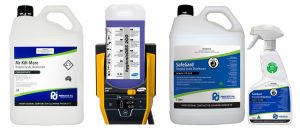Blog
Building for the Future
10 May 2021The Importance of Green Packaging
1 June 2021May 2021
Germs are everywhere around us. They can be found in the air, in water, on various surfaces, even on and in our bodies. Many of these will live without causing us any harm whatsoever, some can even help us to stay healthy, while others have the potential cause infection, illness and even death, like SARS-CoV-2 (COVID-19 virus).
To help prevent the spread of potentially dangerous germs that can lead to deadly infection, a number of protective measures can be taken.
HAND HYGIENE
One of the most basic yet effective measures is to simply wash your hands. When you touch a surface with a germ or virus particle on it, it will stick to your skin. If you then proceed to touch your face, in particular your eyes, mouth or nose, infection is highly possible.
To reduce your chances of infection, a thorough 20 second scrub of complete hand with soap and water is required to completely remove any dirt, mucus or other viral substances that you may have come into contact with.
Soap is very effective at ‘killing’ the coronavirus because soap contains molecules that compete with the lipids in the virus membrane. These help to dissolve the weak fat membrane which causes the virus to fall apart and become inactive.
If soap is not readily available or practical, then an alcohol-based hand sanitiser like Zero-Bac 70% is a good temporary solution. However, do keep in mind that you may not be able to effectively clean every crack and crevice of your hands with a hand sanitiser.
SURFACE CLEANING
When disinfecting the ‘source’ (places where infectious agents live), visibly dirty surfaces should first be cleaned with a detergent. You must pre-clean before the use of disinfectant if the product you are using specifies this in its instructions. The simple reason for this is that organic matter can deactivate many disinfectants. Pre-cleaning reduces the soil load and allows the disinfectant to act more effectively against the bacteria and viruses targeted.
It is good practice to routinely clean frequently touched surfaces such as door handles, bedrails, table tops and light switches. When visibly soiled, general surfaces and fitting such as floors, walls, sinks and taps should be similarly cleaned as soon as possible. In any instance, use a warm water detergent solution and ensure that the entire surface receives mechanical action via cloth or mop.
SURFACE DISINFECTION
Next, in order to effectively ‘kill’ germs on hard surfaces (that is, surfaces where liquids pool rather than soak in), a disinfectant would be used. Common types of chemicals suitable for use as disinfectants include alcohol in a concentration of at least 70%, chlorine bleach in a concentration of 1,000 parts per million, oxygen bleach, or wipes and sprays that contain quaternary ammonium compounds.
If seeking a surface disinfectant to effectively kill COVID-19, the Therapeutic Goods Administration (TGA) has published a list of products that are permitted to claim they are effective against COVID-19, including our very own Mr. Killmore Hospital Grade Disinfectant (AUST L 362513), SafeGard Hospital Grade Disinfectant (ARTG 335416), and Hygienic DES 2GO Commercial Grade Disinfectant (ARTG 345091) by Hagleitner.

For the full product list, visit: https://www.tga.gov.au/disinfectants-use-against-covid-19-artg-legal-supply-australia.
To effectively safeguard your facility against COVID-19, contact Peerless JAL on 1800 800 248.
#coronavirus #covid #covidsafe #cleaning #hygiene #disinfection #staysafe
